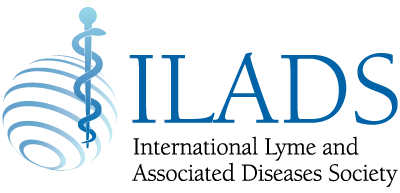Vector-Borne Illness Fundamentals Course
The ILADS Vector-Borne Illness Fundamentals course provides an in-depth examination of the basic science, clinical experience, and trial evidence pertaining to the diagnosis and treatment of patients infected with Lyme and other tick-borne diseases.
The course is currently available on-demand and in-person. The next scheduled in-person training is Thursday, November 7, 2024 in San Antonio, TX at the ILADS Annual Scientific Conference. To view the on-demand course, click here.
Completion of a Fundamentals course is a prerequisite to participating in the ILADEF physician training program.
The Vector-Borne Illness Fundamentals Course content includes:
Overview
An introduction to the terminology, epidemiology and ecology of Lyme disease and related tick-borne disorders, this presentation looks at the burden of illness in both human and monetary terms, the role of vector and host factors, the nature of the clinical challenges in these diagnoses, and the evidence-based approach presented in this ILADS Fundamentals Course.
Tick Bites and Early Lyme Borreliosis
This section presents the evidence for assessing and managing known Ixodes tick bites. Then, using case illustrations, it explores the diagnosis and management of early Lyme disease with and without erythema migrans as a presenting symptom.
Late, Untreated and Persistent Lyme Borreliosis
Using case illustrations, and building upon preceding presentations, this segment navigates the assessment, diagnosis, and management of later manifestations of Lyme borreliosis, with attention to the differential diagnosis, clinical and laboratory evaluation, and pathophysiology of disseminated disease. It provides an evidence base to support treatment recommendations. Similarly, this segment goes on to explore the evaluation, differential diagnosis, and management of patients who remain ill or relapse after treatment for Lyme disease, as well as foundational pathophysiology and evidence.
Co-Infections I: Babesia, Bartonella, and Borrelia Miyamotoi
The simultaneous infection of a host by multiple pathogens is the subject of this presentation, which addresses clinical presentation, evaluation and management of three common co-infections. The impact of the co-occurrence of these infections on severity, treatment combinations, and duration of treatment is explored.
Co-Infections II: Rickettsias and Opportunistic Infections
To round our discussion of co-infections, this presentation takes a close look at Ehrlichiosis, Anaplasmosis, and Rocky Mountain Spotted Fever, as well as the infections caused by Mycoplasma and Chlamydia.
Putting It All Together: Diagnosis and Treatment of Patients with Complex Presentations and/or Multiple Tick-Borne Infections
The final course module features experienced clinicians sharing case studies and best practices in the diagnosis and treatment of patients presenting with late-stage, complex or multiple tick-borne illnesses.

